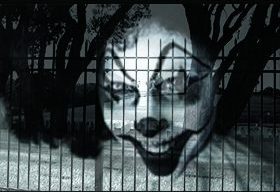The revival of the clowns in pop culture
Clowns were making headlines since 2016: Twisty the Clown leaped from a minor character in “American Horror Story” to have a whole season dedicated to killer clowns; Stephen King’s “It” was brought back to screen 27 years later, breaking box office records worldwide; and by mid October last year, hundred of reports regarding clown sightings spread out through the U.S.
There is no denial that clowns are inevitable. Could this be the renaissance for the clown industry?
Even though I don’t love clowns, I do think that bringing back scary clowns is a good thing. It is bringing business back to stores that sell clown accessories. They are also a great way to get some funny, scary reactions from strangers in the streets.
Clowns have re-entered the popularity spectrum in both positive and negative ways. They were primarily known as entertainers at kids parties and circuses for a long time, but they have always had a creepy and scary side too.
The clown acts may have gone down but during the 2016 clown sightings, sales for clown costumes skyrocketed.
“The fascination with clowns is really the fact that they’re not real,” Scott Bonn, a criminologist and professor of sociology at Drew University said in TIME magazine when asked about the infamous 2016 clown sightings.
There is a mystery behind all that makeup. They re-create feelings and emotions with it. With the right techniques and colors, clowns can go from being preppy and cute to scary and creepy. That is the scary yet great things about them.
“Clowns were comic relief from the thrills and chills of the daring circus acts, an anarchic presence that complimented the precision of the acrobats or horse riders,” the Smithsonian Institution said about clowns in the United States.
“That’s creating a vicious circle of clown fear,” Smithsonian Institution said. “More scary images means diminished opportunities to create good associations with clowns.”
The scary clown image in the U.S. emerged after a serial killer from Illinois named John Wayne Gacy, also known as “killer clown”, killed 33 boys and young men in the 1960s. That brought upon negative connotations about clowns. It was no longer the happy, clumsy or drunk looking entertainer in the room, it could also be a potential killer in disguise. These kinds of concepts haven’t always been around but this Gacy provoked them.
It may suck that clowns aren’t being hired as much for kids’ events, but the business isn’t dying completely. The idea of clowns has transformed from friendly clowns like Krusty from “The Simpsons” to murderous Pennywise in “It”.








Brian Wishnefsky • Oct 29, 2017 at 9:45 pm
Dear Maria Isabel Del Castillo Schmidhuber:
I read your article about clowns. I was impressed by your writing and thoughts. The reason I contacted you is because I am an expert on clown phobia.
I am 63 years old, I have been a professional clown for 32 years. You can read about me in Esquire Magazine: http://www.esquire.com/news-politics/a35139/sparky-the-clown-interview-brian-wishnefsky/
I also sold out two shows at Carnegie Hall and featured on America’s Got Talent. I only mention this so you will know that I have paid my dues and know what I am talking about.
I have been researching this so-called phobia since 1995. That is when I first noticed it. It became my life’s endeavor to figure out the history, reasoning and progression of it. Here’s the teaser: This whole thing has little to do with clowns.
I would love to be a guest speaker at Skyline College or anywhere else to help shed light on this matter. Real clowns want to make people happy and laugh.
Please contact me if you are interested. Thank you.
Brian Wishefsky